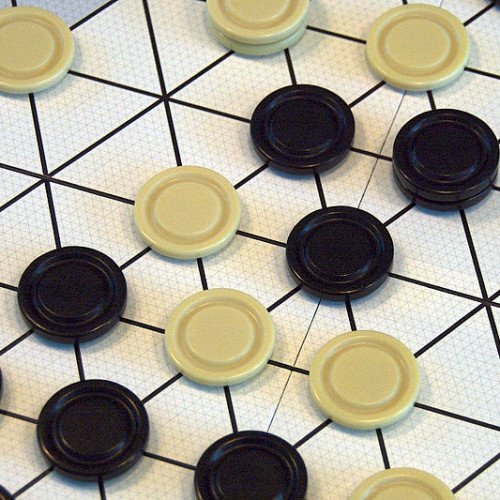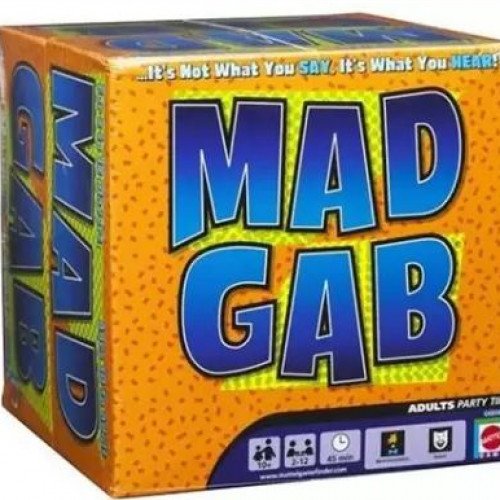GIPF VS MAD GAB

GIPF
GIPF is an abstract strategy board game by Kris Burm, the first of six games in his series of games called the GIPF Project. GIPF was recommended by Spiel des Jahres in 1998. Players take turns pushing tokens (one player taking black, the other white) from the edge of the tri-gridded, hexagonal board, with pieces already in play pushed in front of the new placements rather than allowing more than one piece on any space. The game is lost if a player has no more tokens to play, and since each starts with a set number of tokens, it is clearly necessary to recycle pieces already positioned to keep playing. This is achieved by contriving to line up four pieces of the same colour in a row on the board, at which point those tokens are returned to their owner, and any opposing tokens extending from the line of four are captured. Because a single player will often move several pieces and change numerous on-board relationships, it is remarkably difficult to predict the state of the board more than one turn ahead, despite GIPF being a game of perfect information. Play tends to be highly fluid and there is no real concept of long term territorial or spatial development. The game can be expanded with extra pieces (available separately) called Potentials, which allow different kinds of moves to be made. These are named for the other games in the GIPF Project, though the other games are not actually necessary in order to utilise the Potentials named after them.
Statistics for this Xoptio

MAD GAB
Mad Gab is a game created by Terry White in which there are at least two teams and 2–12 players. Each team has two minutes to sound out three puzzles. The puzzles, also known as mondegreens, contain small words that, when put together, make a word or phrase. For example, "These If Hill Wore" when pronounced quickly sounds like "The Civil War". Another example would be "Eye Mull of Mush Sheen" quickly spoken it sounds like "I'm A Love Machine". There are two levels of difficulties: easy and hard. The faster the puzzles are answered, the more points the players score. This game uses phonetics, which is a branch of linguistics. This game is a test for the human brain to process sounds based on simpler English-written sounds into a meaningful word or phrase. The game is designed where a person would not be able to decode the meaning of the phrase unless spoken out loud and listened; reading the phrase silently will not allow the player to decode the meaning because sounds would have to be encoded into meaningful English words.